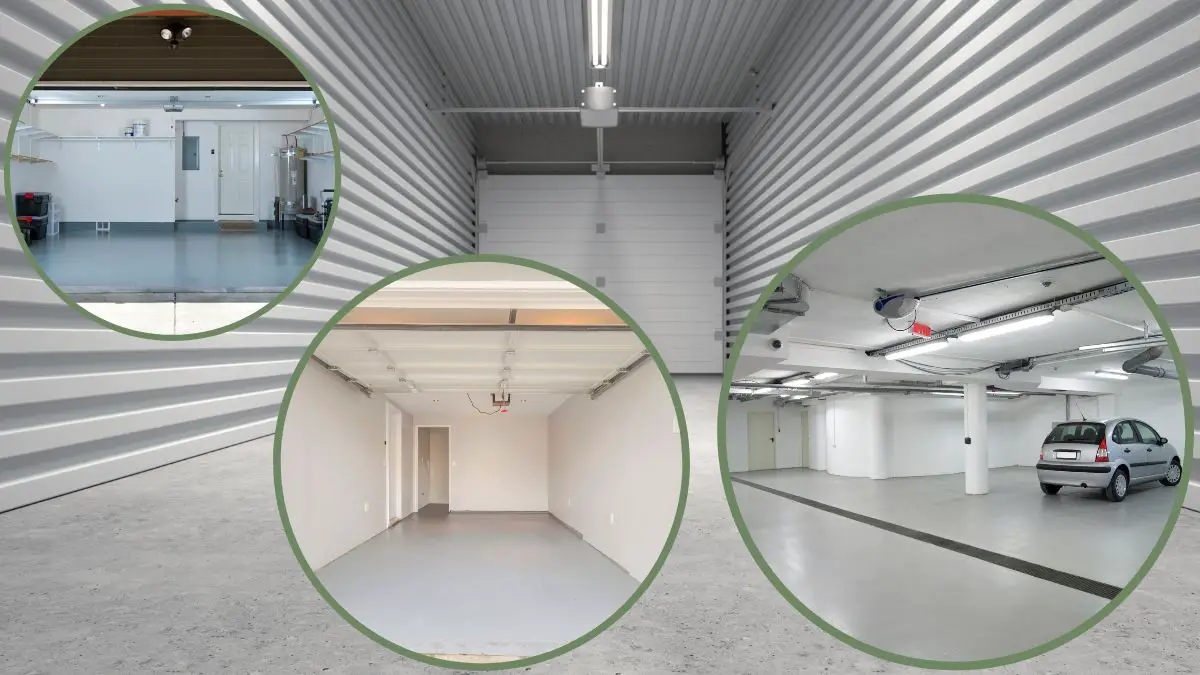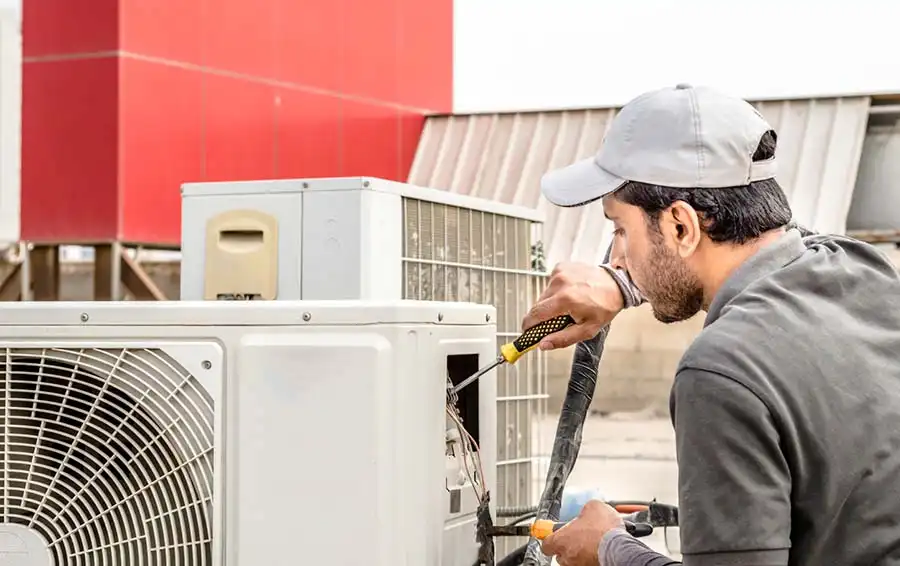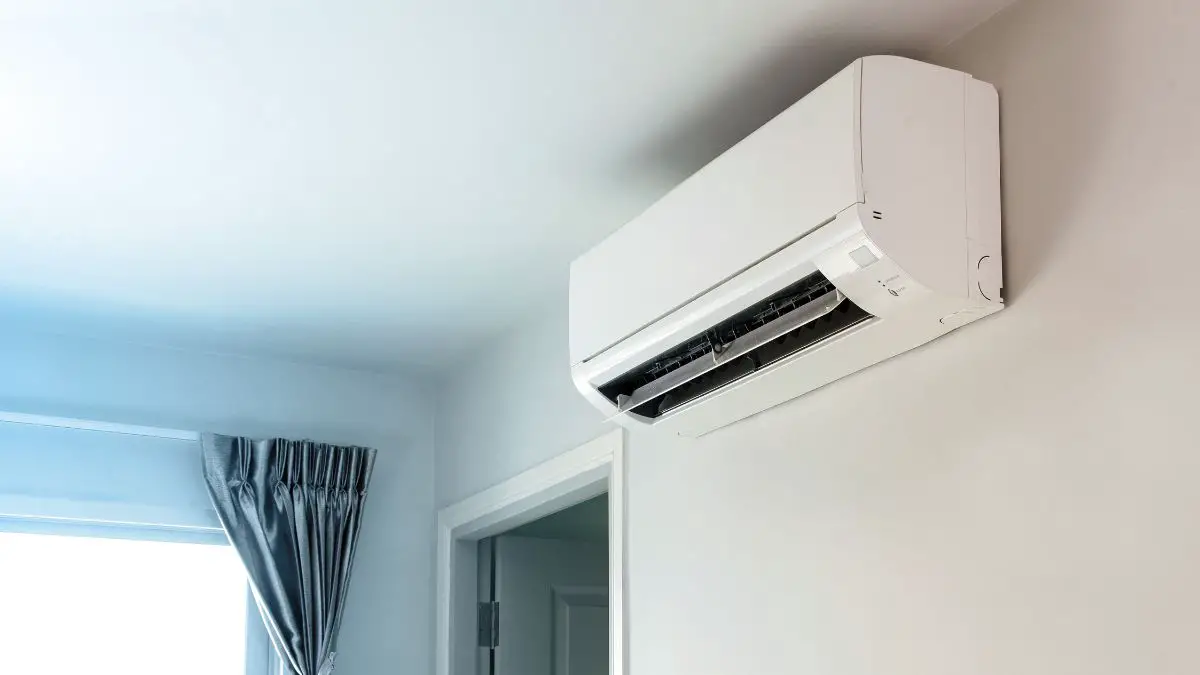You’re about to embark on a journey to find what size mini split for garages. The importance of this decision cannot be overstated.
Imagine transforming your garage into a comfortable workspace, a gym, or even an extra living area. All of this is possible with the right mini-split.
Choosing the right size mini-split for your garage is not just about comfort. It’s about efficiency, cost savings, and enhancing the usability of your space.
| Garage Size | Square Footage | Recommended Mini Split Size (BTU) |
|---|---|---|
| One-Car Garage | 200-300 sq. ft. | 4,000-6,000 BTU |
| Two-Car Garage | 400-600 sq. ft. | 8,000-12,000 BTU |
| Three-Car Garage | 600-900 sq. ft. | 12,000-18,000 BTU |
But it’s not as simple as picking the biggest or the most powerful unit. It’s about finding the one that fits your garage like a glove. Factors such as insulation and climate play a role. Using our mini split heat pump calculator will help you find the best mini split heat pump for you.
Get FREE quotes from licensed HVAC contractors in your area today. Whether you need a new install, service, or basic repair We Can Help! All HVAC contractors are screened, licensed, and insured.
Understanding Mini Splits
These compact, versatile, and energy-efficient units are a game-changer for spaces like your garage. Unlike traditional HVAC systems, mini splits don’t require ductwork, making them an excellent choice for spaces where installing ducts would be impractical or impossible.
What is a Mini Split?
A mini split, also known as a ductless mini split system, is a heating and cooling system that doesn’t require ductwork.
This makes it a fantastic choice for spaces like your garage, where installing ductwork might be impractical or downright impossible.
How Does a Mini Split Work?
A mini split works similarly to your standard air conditioning system but has key differences. It comprises two main components: an outdoor compressor/condenser and an indoor air-handling unit.
These two parts are connected by a conduit, which houses the power cable, refrigerant tubing, suction tubing, and condensate drain.
When you turn on your mini split, the compressor pumps refrigerant through the system to the indoor unit. The refrigerant absorbs heat from the air inside your garage and carries it outside, leaving behind cooler air.
In the winter, the process reverses: the system extracts heat from the outdoor air and uses it to warm your garage.
4 Benefits of Using a Mini Split in a Garage
- Energy Efficiency: Mini splits are incredibly energy-efficient. They heat or cool only the areas you want, reducing energy waste. This means lower energy bills for you and less impact on the environment.
- Flexibility: A mini split can handle whether your garage is a small space for your car or a large workshop. You can choose from single-zone systems for one room or multi-zone systems that can heat or cool multiple rooms independently.
- Easy Installation: Without ductwork, a mini split is much simpler and less invasive than a traditional HVAC system. This means less disruption to your home and your life.
- Improved Comfort: With a mini split, you can transform your garage into a comfortable space year-round, whether using it as a workshop, a home gym, or just for parking your car.
Understanding what size mini split for garages is an excellent step to begin with the installation. Too small, and it won’t adequately heat or cool the space. If it is too large, you risk short cycling, leading to increased wear and tear and decreased efficiency.

How to Choose a Mini Split for Your Garage
When it comes to choosing what size mini split for garages, there are several factors you need to consider. Let’s delve into each one.
Size of the Garage
The size of your garage is a crucial factor. The larger the space, the more powerful the mini split must be to heat or cool it effectively. To calculate the square footage of your garage, multiply its length by its width.
The first step in determining what size mini split for garages is to assess your garage’s square footage. Measure the length and width of the indoor space to calculate the total area.
This measurement will help you determine the BTU (British Thermal Unit) requirements for the mini split unit.
What You Need To Consider?
It’s crucial to consider the insulation quality of your garage. Poor insulation can result in energy loss and reduced efficiency. Check for gaps or cracks in the garage walls, doors, and windows that may cause air leakage.
Insulation in Your Garage
Consider the insulation of your garage. The better insulated your garage is, the less heating or cooling it will need to maintain a comfortable temperature.
This means you can opt for a more minor, less powerful mini split. On the other hand, a poorly insulated garage will require a more robust system to compensate for the heat loss or gain.
Climate and Geographical Location
Your local climate and geographical location also play a significant role. If you live in a region with hot summers and cold winters, you’ll need a size of mini split capable of heating and cooling. If you live in a milder climate, a cooling-only system might suffice.
Choosing the location for the indoor and outdoor units is critical for optimal performance. Select a suitable spot on the garage wall for the indoor wall unit, ensuring it provides even airflow throughout the space.
Mounting the outdoor unit on the exterior wall, away from direct sunlight and obstructions, will promote efficient operation.
Purpose of Your Garage
Think about what you use your garage for. Is it just for parking your car? Or do you use it as a workshop, a home gym, or an extra living space? The more time you spend in your garage and use it, the more critical it is to maintain a comfortable temperature.
Choosing what size mini split for garages is not just about comfort. It’s about efficiency, cost savings, and maximizing your space. So take your time, consider all the factors, and choose wisely.

How to Determine What Size Mini Split for Garages?
Determining what size mini split for garages is critical to a more comfortable and energy-efficient space. It’s not just about picking the most powerful unit; it’s about finding the one that fits your garage like a glove.
See our Heat Pump Size Calculator to determine your mini split size.
Understanding BTU and its Relation to Mini Split Size
British Thermal Units is a unit of heat energy. It measures the amount of heat a heating or cooling unit can remove from a room per hour. So, when looking at what size mini split for garages, the BTU rating tells you how powerful the unit is.
But why does this matter? The size of your garage, the insulation, the climate, and how you use the space all affect how much heating or cooling is needed. By calculating the required BTU for your garage, you can choose a mini split that’s just the right size.
Here’s a step-by-step guide to help you calculate the required BTU for your garage.
Guide To Calculating The Required BTU For Your Garage
- Measure Your Garage: Start by measuring the length and width of your garage to calculate the square footage. Multiply the length by the width to get this number.
- Estimate the Base BTU: As a general rule of thumb, you’ll need approximately 20 BTU per square foot. So, multiply your garage’s square footage by 20 to get the base BTU.
- Adjust for Insulation: If your garage is well-insulated, you can reduce the BTU by about 10%. If it’s poorly insulated, increase the BTU by about 30%.
- Adjust for Climate: If you live in a hot climate, increase the BTU by about 30%. If you live in a mild climate, you can reduce it by about 10%.
- Consider the Purpose of Your Garage: If you’re using your garage as a workshop or spending a lot of time in it, you might want to add an extra 10% to the BTU to ensure a comfortable temperature.
BTU Requirements for Different Garage Sizes
To give you a better idea, here are some examples of BTU requirements for different garage sizes:
- One-Car Garage (about 200-300 sq ft): You’ll need a mini split with a BTU rating of about 4,000 to 6,000 BTU.
- Two-Car Garage (about 400-600 sq ft): You’ll need a mini split with a BTU rating of about 8,000 to 12,000 BTU.
- Three-Car Garage (about 600-900 sq ft): You’ll need a mini split with a BTU rating of about 12,000 to 18,000 BTU.
These are just estimates. The actual BTU requirement could be higher or lower depending on the factors we discussed earlier.
What You Need To Consider?
Once you have determined the size and heating/cooling requirements, you can explore the wide range of mini split air conditioning systems available. Trusted brands such as Mitsubishi Electric and Cooper & Hunter offer various models with different efficiency ratings.
Determining The Heating And Cooling Requirements
Think about how you plan to use the garage. Will it be used as a workshop, storage area, or additional living space? The intended use will help gauge the other heating or cooling capacity required.
Estimate the BTU needed based on the garage’s square footage for cooling. As a general guideline, you’ll need approximately 20 BTUs per square foot of space. However, this may vary depending on extreme temperatures or poor insulation.
Consider the lowest temperatures your region experiences and the desired indoor temperature in the garage for heating. Mini split heat pumps can provide efficient heating even in colder climates.

Recommended Mini Split Sizes for Different Garage Sizes
Determining what size mini split for garages is key for a more comfortable and energy-efficient space. Here are some general recommendations based on the size of your garage.
One-Car Garage
For a one-car garage, which typically measures 200 to 300 square feet, a mini split with a BTU rating of about 4,000 to 6,000 BTU is usually sufficient. This ensures the unit can heat or cool the space without wasting energy.
Two-Car Garage
A two-car garage, usually around 400 to 600 square feet, requires a more powerful mini split. In this case, you’re looking at a unit with a BTU rating of about 8,000 to 12,000 BTU. This provides enough power to maintain a comfortable temperature, even when both cars are inside.
Three-Car Garage
For a three-car garage, which can be anywhere from 600 to 900 square feet, a mini split with a BTU rating of about 12,000 to 18,000 BTU is recommended. This ensures that the entire space is adequately heated or cooled, no matter how you use your garage.
More Oversized or Uniquely Shaped Garages
The calculation can be more complex for larger or uniquely shaped garages. You might need to divide the space into sections and calculate the BTU requirements for each section.
You might consider a multi-zone mini split system, which allows you to control the temperature in different areas independently.
What You Should Consider?
These are just general recommendations. The actual size of the mini split you need could be higher or lower depending on factors like insulation, climate, and how you use your garage. Always take the time to calculate your specific BTU requirements and consult with a professional if you’re unsure.

Installation and Maintenance of Mini Splits in Garages
Once you’ve chosen the perfect mini split for your garage, the following steps are installation and maintenance. Installing a mini split involves several steps. Let’s explore these crucial aspects.
Overview Of The Installation Process
- Choosing the Location: The indoor unit should be placed in a location allowing optimal air distribution. The outdoor unit needs a spot free from dust and debris, with enough space for air to circulate.
- Mounting the Units: The indoor unit is mounted on the wall, while the outdoor unit is placed on a concrete pad on the ground or attached to the wall using brackets.
- Connecting the Units: The two units are connected by a conduit, which houses the power cable, refrigerant tubing, suction tubing, and condensate drain. A hole is drilled in the wall to run the conduit from indoor to outdoor units.
- Finishing Up: The system is vacuumed to remove air and moisture once the units are connected. Then, the refrigerant is added, and the system is tested to ensure it’s working correctly.
Importance Of Professional Installation
While installing the mini split yourself might be tempting, it’s highly recommended to have it done by a professional. They have the skills and experience to ensure the mini split setup is done correctly and safely.
A poorly installed mini split can lead to problems down the line, including decreased efficiency, increased wear and tear, and even system failure. Once your mini split is installed, regular maintenance is key to keeping it running smoothly.
3 Tips For Maintaining Your Mini Split System
- Clean the Filters Regularly: Dust and debris can clog the filters, reducing efficiency. Clean them monthly during periods of heavy use and at least once every season.
- Keep the Outdoor Unit Clear: Make sure there’s no debris, leaves, or snow around the outdoor unit. This can obstruct airflow and cause the system to work harder than necessary.
- Schedule Regular Professional Maintenance: Have a professional check your system at least once a year. They can spot and fix potential issues before they become significant problems.
DIY Installation
You can choose professional installation or a DIY approach when considering installation costs. Professional installation ensures proper setup and adherence to electrical wiring and safety regulations.
If you have experience and are comfortable with DIY projects, DIY mini split options are available with detailed instructions. If unsure, consulting with professional mini-split installers is recommended for a hassle-free installation process.
Garage Mini Split Systems And Additional Benefits
A ductless mini split air conditioner (AC) is an ideal solution for efficient cooling and heating of your garage. You can create a comfortable environment while maximizing energy savings by choosing the right size and energy-efficient mini split AC.
Ductless mini split ACs provide an efficient heating and cooling solution for garages without extensive ductwork. Unlike traditional window air conditioners, ductless systems are designed for easy installation and offer more precise temperature control .
They are also known for their quiet operation and advanced features like remote controls, allowing you to conveniently adjust settings from anywhere in the garage.
What Size Mini Split For Garages FAQs
You might have a few questions as you navigate to choose the right mini split for your garage. Here are some of the most common ones:
What size mini split do I need for a 20×20 garage?
A 20×20 garage is 400 square feet. Using the general rule of 20 BTU per square foot, you’d need a mini split with a BTU rating of about 8,000.
What size mini split for a 4-car garage?
A four-car garage is typically around 800 to 1000 square feet. Using the general rule of 20 BTU per square foot, you’d need a mini split with a BTU rating of about 16,000 to 20,000.
Is a mini split a good idea for a garage?
Absolutely! A mini split is an excellent choice for a garage. It’s energy-efficient, flexible, and doesn’t require ductwork, making it perfect for spaces where installing ducts would be impractical or impossible.
What size heat pump for a 24×24 garage?
A 24×24 garage is 576 square feet. Using the general rule of 20 BTU per square foot, you’d need a heat pump (or mini split with a BTU rating of about 11,520.
These answers are just general guidelines. The actual size of the mini split you need could be higher or lower, depending on your specific circumstances.
Final Thoughts On What Size Mini Split For Garage
Choosing what size mini split for garages is crucial to creating a comfortable, energy-efficient space. The size of your garage, the insulation, the climate, and how you use the space all affect how much heating or cooling is needed.
These systems can transform your garage into a functional space for hobbies, workshops, or even additional living space by maintaining a comfortable indoor environment throughout the year.
Garage mini split systems offer additional benefits besides efficient cooling and heating. They provide better temperature control and are suitable for garages with poor insulation or extreme temperatures.








